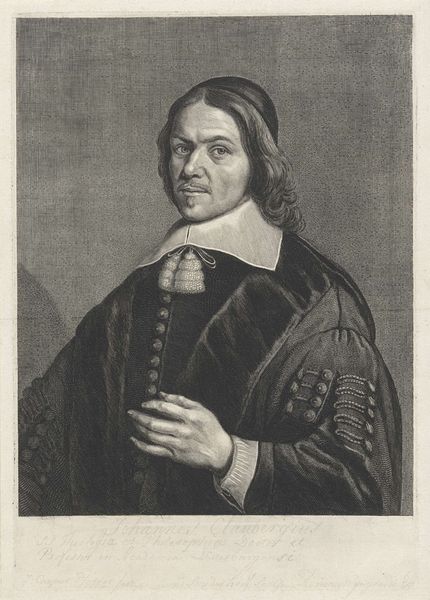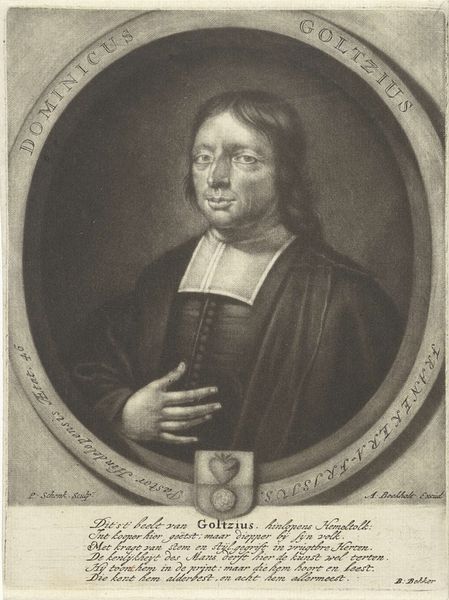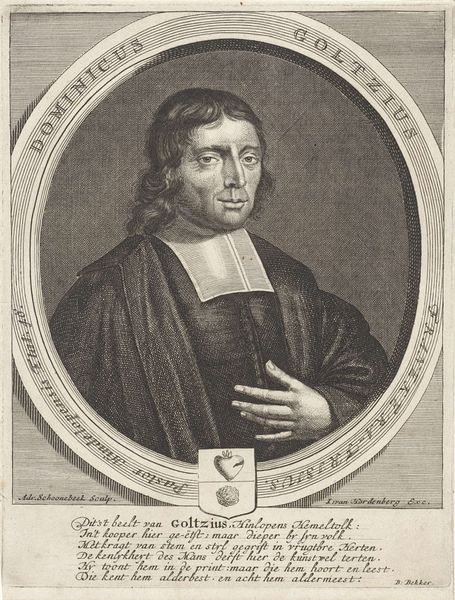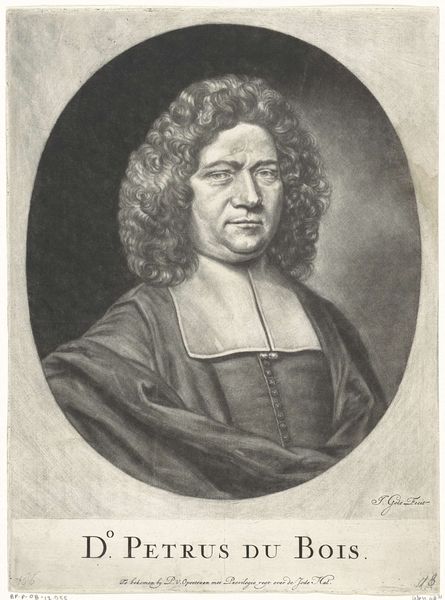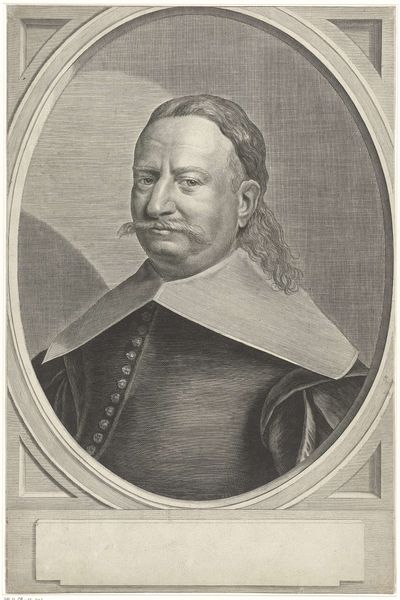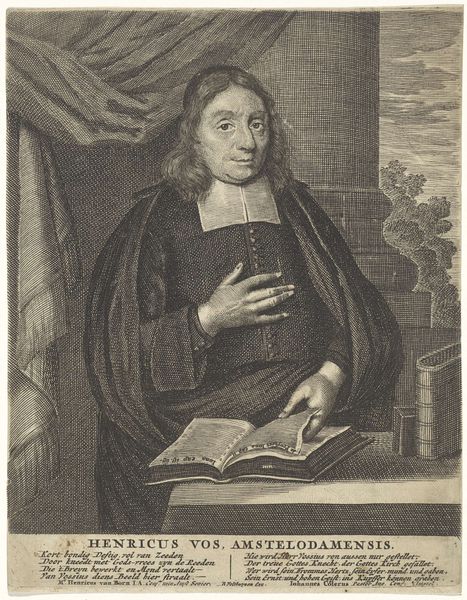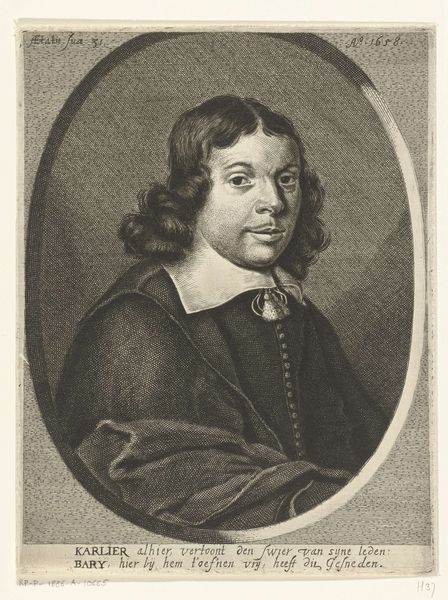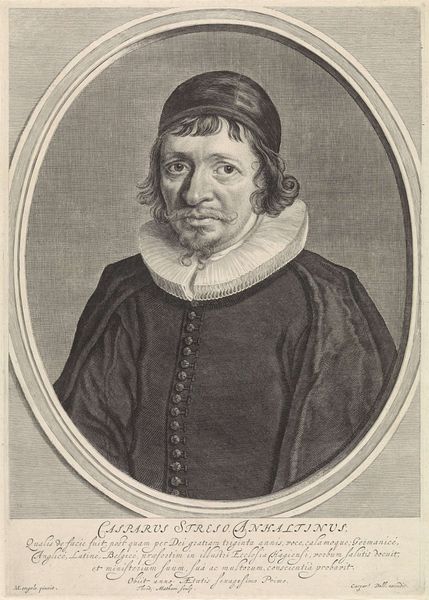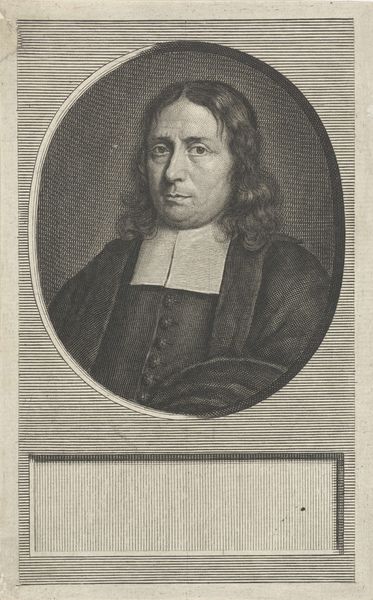
Dimensions: height 176 mm, width 115 mm
Copyright: Rijks Museum: Open Domain
Editor: Here we have a portrait, *Portret van Pieter de Hooch,* made sometime between 1750 and 1800, here at the Rijksmuseum. It's rendered in oil paint and the details, particularly in the face, feel so intimate, despite the formality of the subject's dress. How do you see this portrait within the larger context of its time? Curator: Well, this work engages with the politics of imagery surrounding artists, particularly dead ones. The choice to portray Pieter de Hooch in what we would now call a Baroque style, well after his death, signals a conscious effort to cement him into a lineage of "great" Dutch masters. Consider, who is this portrait really for? Editor: That’s a really interesting question! I guess it’s not just *for* us, the museum visitors, but it also seems to be *of* the artist for posterity’s sake. But you said, "politics of imagery," how exactly does it work here? Curator: The choice of style—recalling the Dutch Golden Age when de Hooch was alive—is less about historical accuracy and more about crafting a specific narrative. The goal here is to elevate de Hooch to a similar level as his forerunners. The institutional power of the museum helps validate these kinds of crafted histories and shape public perception, wouldn't you say? Editor: Definitely. By being *in* the Rijksmuseum, it sort of… authenticates that narrative. It does seem like these curatorial decisions contribute to shaping the way we remember artists, often retroactively fitting them into established movements. Curator: Exactly! We’re not just looking at a picture, we’re witnessing the active construction of artistic legacy. Do you see the slight alterations and imagined elements in the painting, further embellishing the romantic notion of the artist? Editor: I hadn't considered the romantic angle before, but I see that now. I initially perceived this piece as straightforward, but there is so much subtle storytelling embedded in it. Thanks! Curator: It shows how crucial it is to dissect the layers of history to understand the art’s position in the cultural narrative, doesn’t it?
Comments
No comments
Be the first to comment and join the conversation on the ultimate creative platform.
